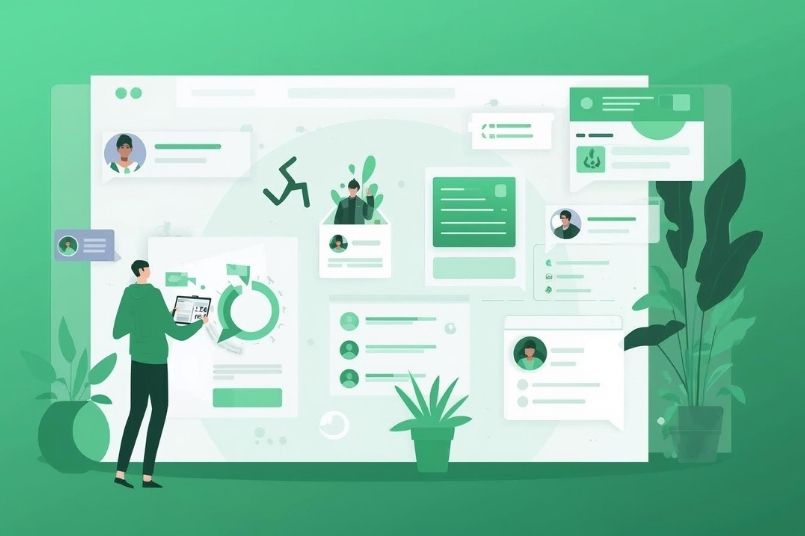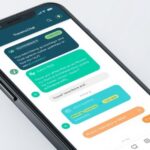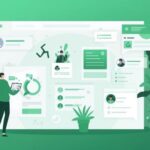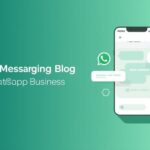From Trial to Paid on WhatsApp: B2B Drip Sequences

The main obstacle for SaaS businesses operating in the US market and international markets involves turning trial users into paying customers. The growing popularity of Product-led growth (PLG) models does not ensure customer adoption through free trials alone. The combination of high open rates and instant delivery and conversational features in WhatsApp makes it a transformative tool for businesses. SaaS businesses can use well-designed WhatsApp drip sequences to activate trial users and present value while creating opportunities for upselling and renewal campaigns that align with Product Qualified Lead (PQL) signals.
The following article demonstrates how SaaS companies can use WhatsApp drip campaigns to lead trial users through their customer journey while delivering immediate value and achieving higher conversion rates.
Why WhatsApp for B2B SaaS Onboarding?
SaaS onboarding has traditionally used email nurture sequences as its standard approach. The combination of inbox fatigue and poor user engagement creates major challenges for businesses. The instant delivery of WhatsApp messages enables users to read them right away while allowing personal interactive communication. The direct communication channel of WhatsApp enables US-based B2B SaaS companies to reach busy professionals who need help with key actions.
The open rate for WhatsApp messages reaches 80-90% while email open rates typically stay between 20-25%. The instant delivery of WhatsApp messages enables businesses to maintain continuous user interaction during trials thus preventing users from disappearing unnoticed.
Mapping the Drip Sequence to PQL Signals
The power of a WhatsApp drip campaign lies in its ability to align with PQL activity. A PQL, or Product Qualified Lead, is a user whose in-product behavior signals strong purchase intent. Rather than sending generic trial-ending reminders, SaaS businesses can trigger personalized WhatsApp nudges when users hit milestones, such as completing a key feature setup, inviting team members, or hitting usage thresholds.
For example, if a user in a project management SaaS adds their first three projects, a WhatsApp message can highlight advanced features like automation or integrations. If another user appears inactive, a conversational prompt can re-engage them with tips or quick setup guides. The key is to match sequences with where the user is in their journey.
Structuring the Perfect WhatsApp Drip Flow
The delivery of effective drip sequences requires strategic timing of motivational messages which should avoid overwhelming users. Most SaaS companies operating in the US market organize their customer journey through three distinct phases which start with activation followed by engagement and conclude with conversion.
The activation phase requires users to experience immediate value from the service. The welcome message on WhatsApp leads users to a two-minute tutorial through a provided link. The initial trial period experiences lower user abandonment rates because of this approach.
The engagement phase of the process aims to motivate users to use their product features more extensively. The platform shows users about their most valuable yet underutilized features and presents stories about successful customers. The delivery of short WhatsApp prompts about product features becomes simpler for users to understand while helping them learn new features.
The conversion stage focuses on converting trial users who actively use the product into paying customers. The messages during this stage include trial expiration alerts and price advantages and special time-limited price reductions. The addition of time-sensitive elements in these messages helps businesses steer users toward making their first purchase.
Leveraging Personalization and Automation
The main advantage of WhatsApp for B2B SaaS operations stems from its ability to deliver personalized content. The system uses AI automation to divide trial users into groups based on their actions and their location and business scale for delivering customized content. The onboarding process for US small business users through WhatsApp focuses on basic setup simplicity yet the process for enterprise users centers around security features and compliance standards and scalability options.
The automated system generates individualized interactions which produce a personal experience for each user even though it operates at large scale. The WhatsApp Business API integration through Waliner.io enables SaaS teams to establish automated sequences which maintain their current technology infrastructure.
Measuring Success and Iterating
Every onboarding sequence requires improvement before achieving perfection. SaaS teams need to track WhatsApp campaign performance through read rates and response rates and click-throughs and paid plan conversion metrics. Teams can enhance their drip campaign effectiveness through A/B testing of message formats and delivery schedules and reward systems.
The analysis of customer churn rates among new subscribers after conversion needs to be conducted. The high rate of customer departure shortly after subscription indicates that the onboarding sequence may have been too forceful while failing to provide lasting value to customers. The main objective should always focus on achieving both conversion rates and long-term customer retention.
The Big Picture for SaaS in the US
The new approach to WhatsApp onboarding matches the industry-wide move toward SaaS companies using real-time conversations to connect with their customers. The market will favor companies which provide immediate value during trials and use smart prompts to move users toward paid subscriptions.
SaaS teams operating in the US can gain market leadership through WhatsApp drip sequences that trigger based on PQL signals. The method boosts conversion rates and builds stronger customer relationships through continuous communication. The method converts trial users into revenue-generating engines while keeping them actively involved beyond the initial sign-up process.
Frequently Asked Questions
1. Why is WhatsApp better than email for SaaS onboarding?
The open rates and user engagement metrics on WhatsApp exceed those of email which makes it a superior tool for sending important onboarding notifications to users.
2. Can WhatsApp work for enterprise SaaS users in the US?
The adoption of enterprise solutions continues to expand. The WhatsApp Business API includes security features which enable it to handle enterprise-level interactions while maintaining compliance.
3. How often should drip messages be sent during a trial?
The ideal number of messages should be between 1 and 2 per week based on user behavior data instead of following a strict time-based plan to prevent user overload.
4. What types of content should be included in WhatsApp onboarding?
Short tutorials and feature highlights together with success stories and time-sensitive offers prove most effective when they match the user’s current position in the trial process.
5. Can WhatsApp drip campaigns improve renewal rates too?
The platform enables businesses to send renewal reminders and perform upsell and feature adoption campaigns which maintain customer engagement after the initial conversion.






Review From Trial to Paid on WhatsApp: B2B Drip Sequences.